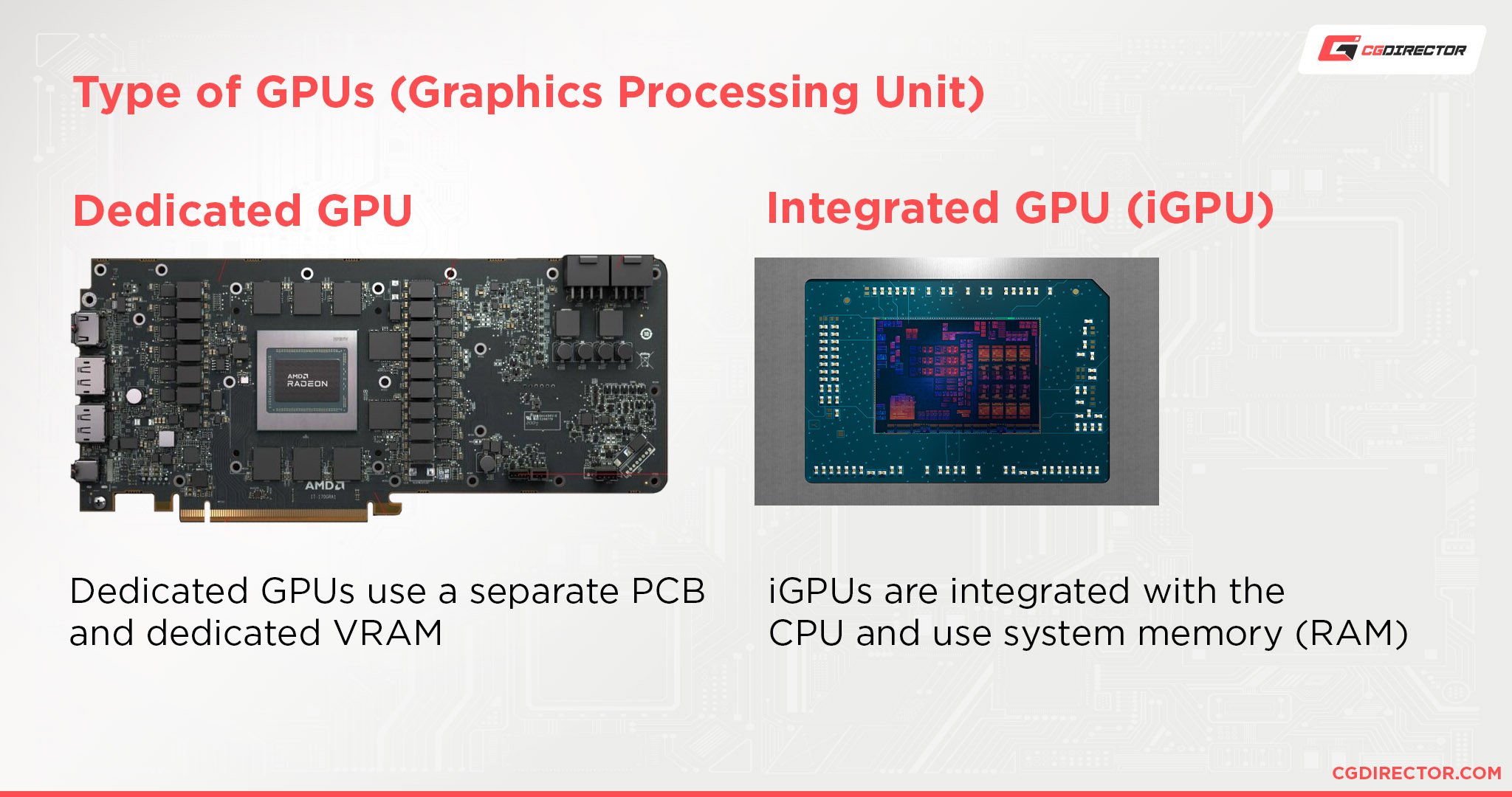
Naming conventions can be quite deceiving. It often seems like there’s not that big a difference between a full-fledged gaming PC and a top-tier gaming laptop — a letter here, a suffix there and that’s about it.
That, however, couldn’t be farther from the truth. A singular suffix can make a world of difference when it comes to performance and, to make things even more complicated, components sporting the exact same name can perform vastly different when “crammed” inside a laptop as opposed to a desktop PC.
Despite following a very similar — if not identical — nomenclature, these components are actually designed and engineered for a completely different form factor.
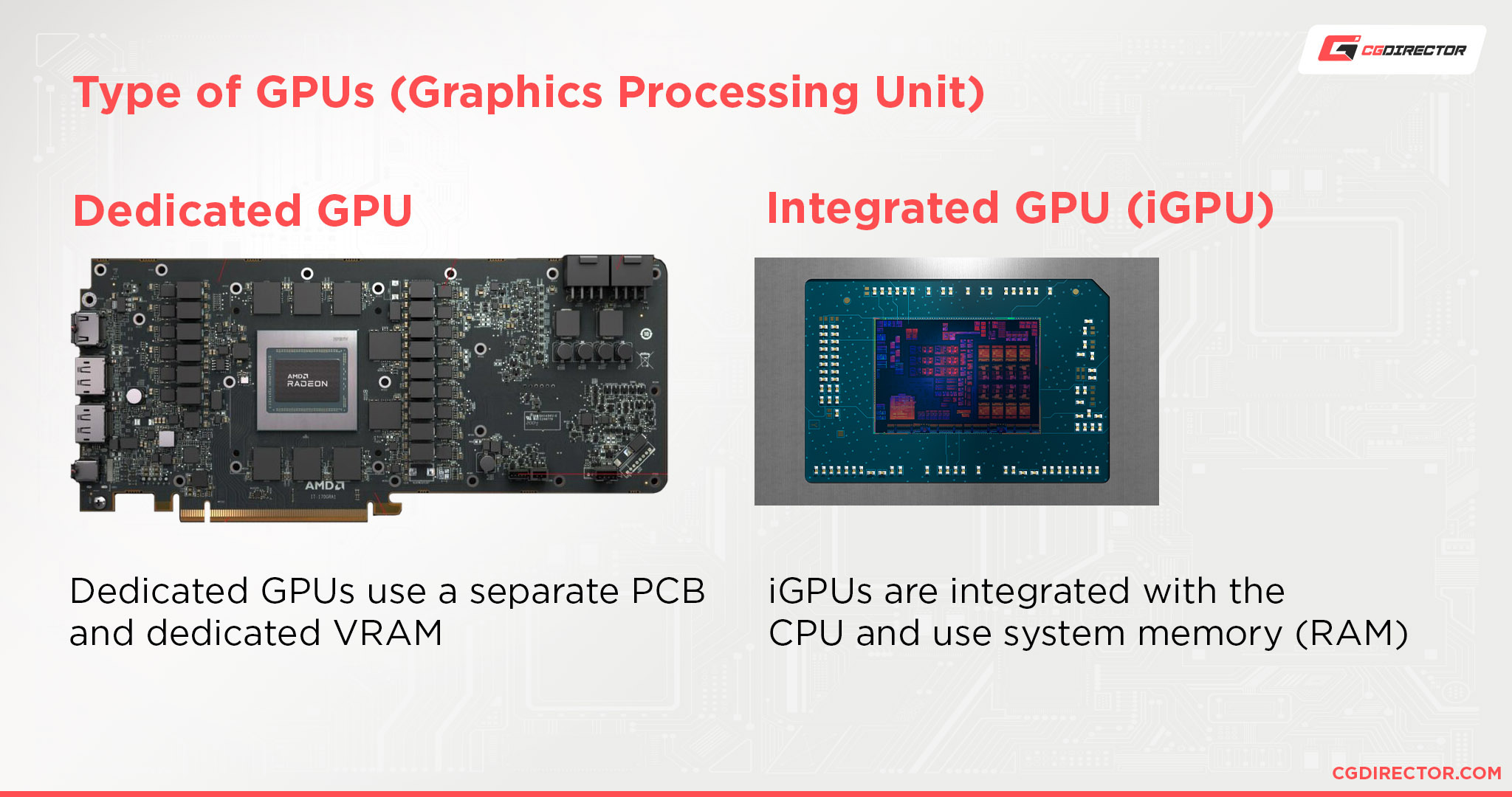

Most laptops are hard to cool, they’re thermally constrained, and, in general, starved for airflow.
Desktop PCs, on the other hand, don’t have these limitations. Because they’re so much more robust and imbued with more cooling potential, their components are designed to draw a lot more power and deliver a much higher — and more consistent — level of performance.
With desktop PCs, sheer horsepower comes first. With laptops, efficiency takes center stage. Each and every single component not only needs to be cooled properly, but it also needs to draw a reasonable amount of power.
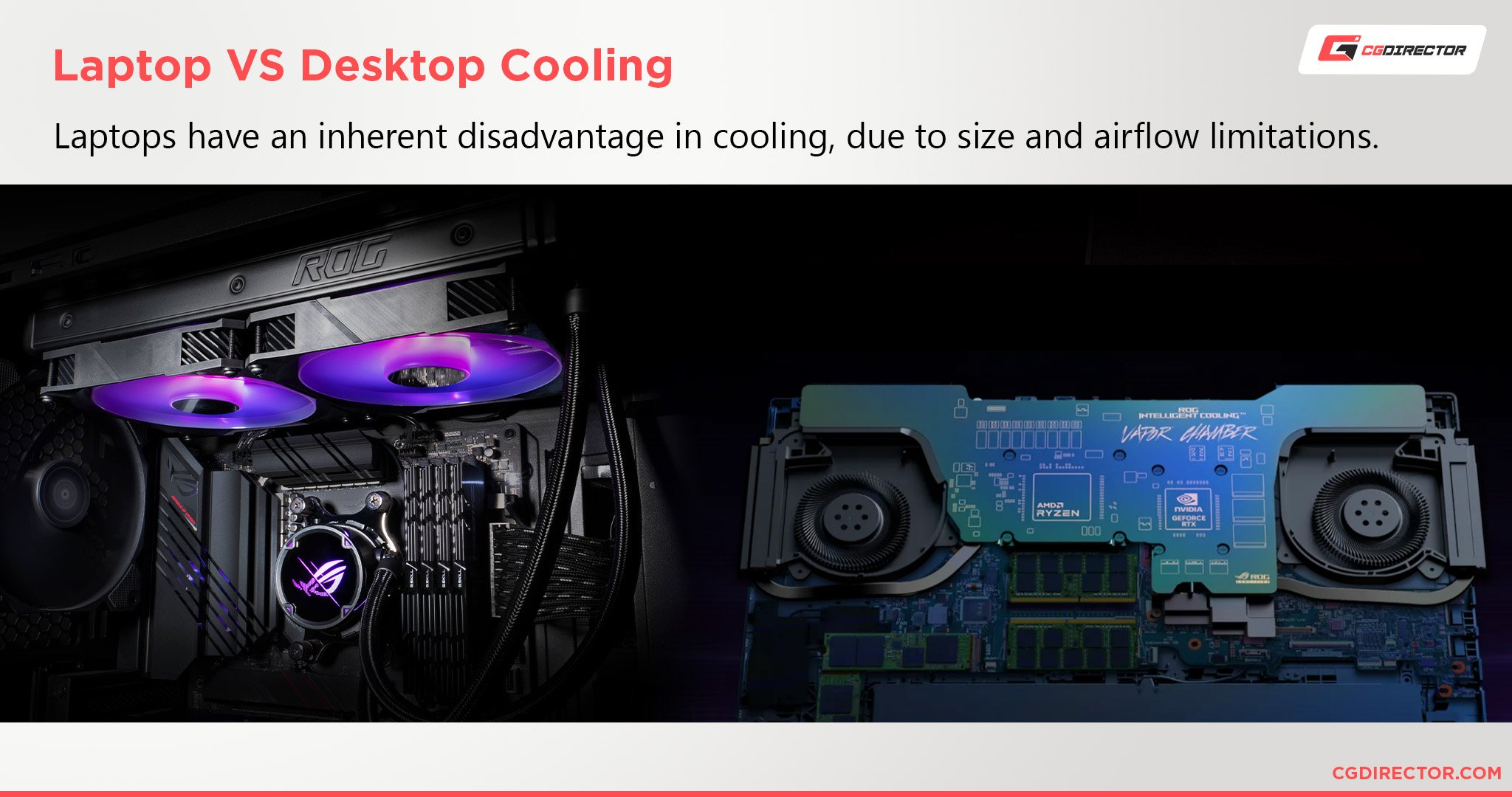

And for the longest time, this meant that laptop GPUs were always much slower than desktop ones, no matter what they were called and how powerful they might have been.
Laptop GPUs always come with fewer bells and whistles when compared to their desktop counterparts. They have lower base and boost clocks, lower power limits, less VRAM (in some cases), and so on and so forth.
They are essentially cut-down implementations and, more often than not, feature an entirely different GPU die when compared to their desktop namesakes.
Still, we’ve come to a very interesting point technology-wise where even the best laptop GPUs can effectively be used for any kind of workload, be it video editing, 3D modeling, rendering, or whatever else.
So even though you’re not always getting desktop-class performance, you should still have enough horsepower to not feel bottlenecked in any particular way.
The naming conventions need a bit of work though, as they’re misleading at best.
Are Laptop GPUs Always Slower Than Their Desktop Counterparts?
For the longest time that was the case. That, however, has started to change over the last few years —at least in the mid-range segment of the market.
The gap between laptop and desktop GPUs still exists (an understatement), but the performance delta between them isn’t nearly as large as it was in the past (depending on the SKU), and that holds true for creative workloads as much as it does for gaming.
Laptop GPUs are always “gimped” in one way or another when compared to their direct desktop counterparts.
As such, they have lower memory bandwidth, slower memory speed, lower TGPs, lower base and boost clocks, alongside — in the case of NVIDIA GPUs — fewer CUDA, RT, and Tensor cores.
Here’s the difference between a laptop and desktop RTX 4080:
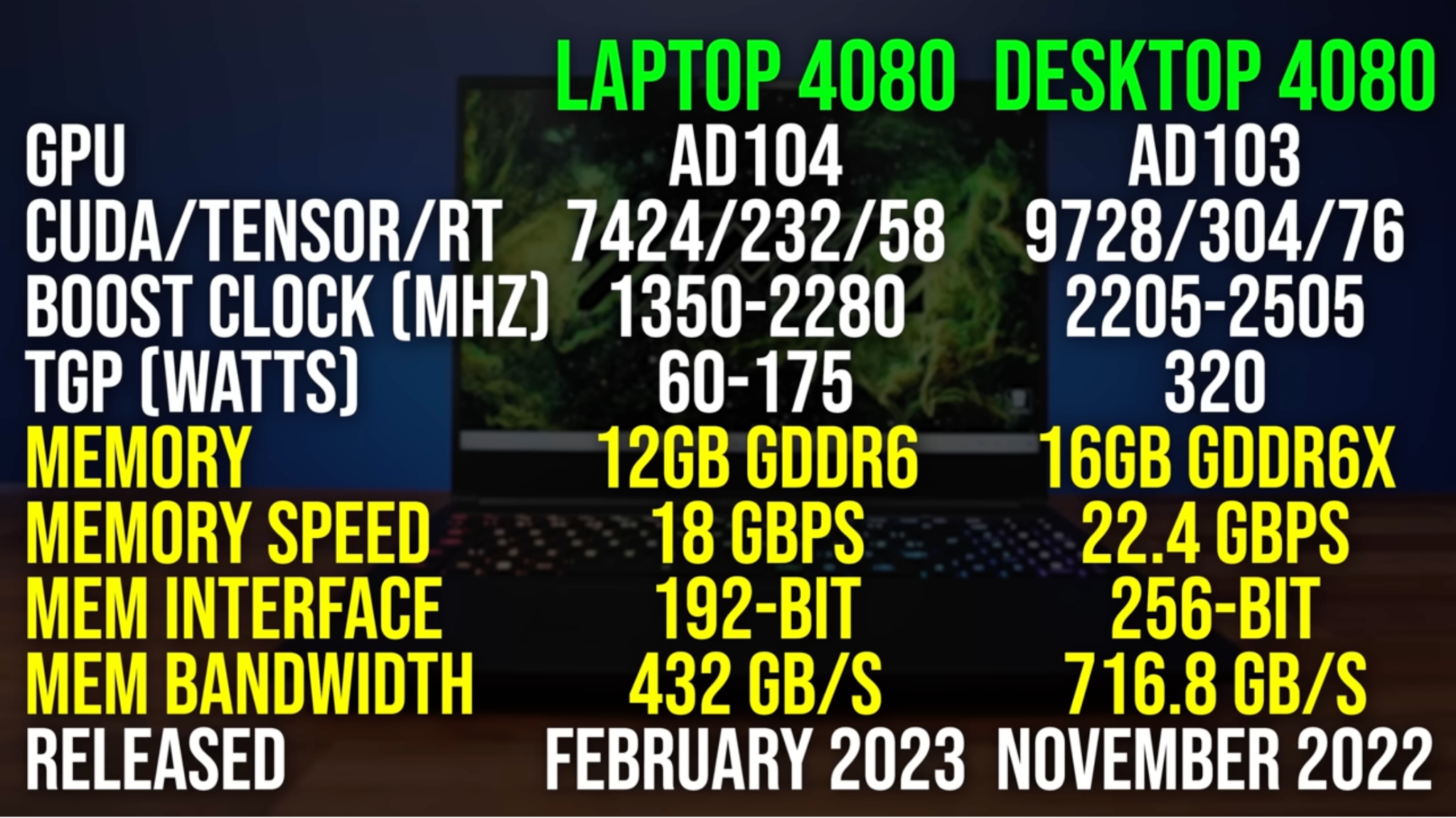

Source: Jarrod’s Tech, YouTube
The fact that these laptop GPUs are slower and less capable when compared to their desktop counterparts doesn’t mean they lack power — far from it, in fact.
Graphics cards have gotten a lot more efficient recently, especially those from NVIDIA.
Mid-tier models no longer need to draw an otherworldly amount of power in order to deliver an exceptional level of performance, which means that very similar — if not identical — dies can be implemented in spec’d-out laptops as opposed to only desktop PCs.
Each new manufacturing process brings with it tremendous gains in both power and efficiency. And as these GPUs become more efficient, they not only draw less power but are also easier to cool down.
That’s why today’s best gaming laptops are, for the most part, quite comparable to full-fledged desktop PCs. That’s also why they’re so darn expensive — potential buyers are getting a lot more power within a much smaller and portable chassis.
So, to answer the opening question: laptop GPUs are slower than desktop ones, but the gap between them has narrowed quite a bit over the last few years.
That being said, the difference in performance varies wildly depending on the particular SKU and how it was implemented.
Higher-end desktop graphics cards are still miles ahead of their laptop counterparts, and that’ll keep on being the case for the foreseeable future.
Laptop GPUs — Naming Conventions Can Be Deceiving
Take the NVIDIA RTX 4070, for example. It can be found in large, powerful gaming laptops, but also the latest Dell XPS 15 — a creator-focused laptop that has a much thinner chassis.
So what’s the catch? This laptop, beautiful and capable though it is, features a measly 50W implementation. And so, as a result, it’s never going to perform as well as one would expect.
The RTX 4070 needs to draw a 100W to fully stretch its legs, which means this XPS has about as gimped an implementation as possible — and yet it still sports the exact same GPU (on paper) as its thicker gaming-oriented brethren.
That’s why you really need to read the fine print before making any kind of purchasing decision.
Manufacturers never go out of their way to advertise these things as doing so might scare away potential buyers — and NVIDIA needs to shoulder the blame as well, as it no longer has a clear nomenclature in place.
Buyers now have to roll up their sleeves and do a fair bit of research, lest they end up with a laptop that isn’t going to perform nearly as well as one would expect.
RTX 40 Series on Laptop — Peculiar Voltage Limitations
NVIDIA’s RTX 40 series laptop graphics cards are very interesting as only the RTX 4080 and RTX 4090 scale beyond a 100W.
You can easily find RTX 4070 implementations that are rated at 140W but you’re not going to gain any additional performance despite that GPU having 40 extra watts to work with.
If you’re interested in learning more about this particular topic, make sure to watch the following video from Jarrod’s Tech:
Needless to say, make sure to check the spec sheet before making any kind of purchasing decision, lest you end up overpaying for a high-end laptop that’ll deliver the exact same performance as a mid-tier one.
Laptop GPUs Are a Lot More Powerful Than One Would Expect
Another great thing that came as a by-product of GPUs getting more advanced and efficient is that, in today’s market, you can easily snag a laptop whose graphics card is a lot more capable than you’d expect given the many thermal and physical limitations which OEMs have to deal with.
Still, you should not expect it to run as well as its desktop-class namesake. Those aforementioned limitations and hurdles are still a bit too steep.
Only on the lower end of the product stack can you get comparable performance — a laptop RTX 4060, for instance, carries the exact same die as its desktop variant.
The higher up the product stack you go, though, the bigger the difference gets, and that’s true for NVIDIA’s offerings as much as it is for AMD’s.
The RTX 4090 is a prime example. The laptop variant, for instance, has almost 70% fewer CUDA cores and a TGP that’s three times lower.
It also has 50% less memory (which is GDDR6 as opposed to GDDR6X), slower memory speed, a smaller memory bus, and lower memory bandwidth. It is, therefore, a 4090 only in name but not in performance.
Still, the mobile 4090 can, in some instances, trade blows with a desktop-class 4080, which is nothing to scoff at. It’s definitely an insanely powerful mobile GPU, although it cannot trade blows with its bigger and more powerful namesake.
In creative applications that difference isn’t quite as large as it is in gaming, but exists nonetheless.
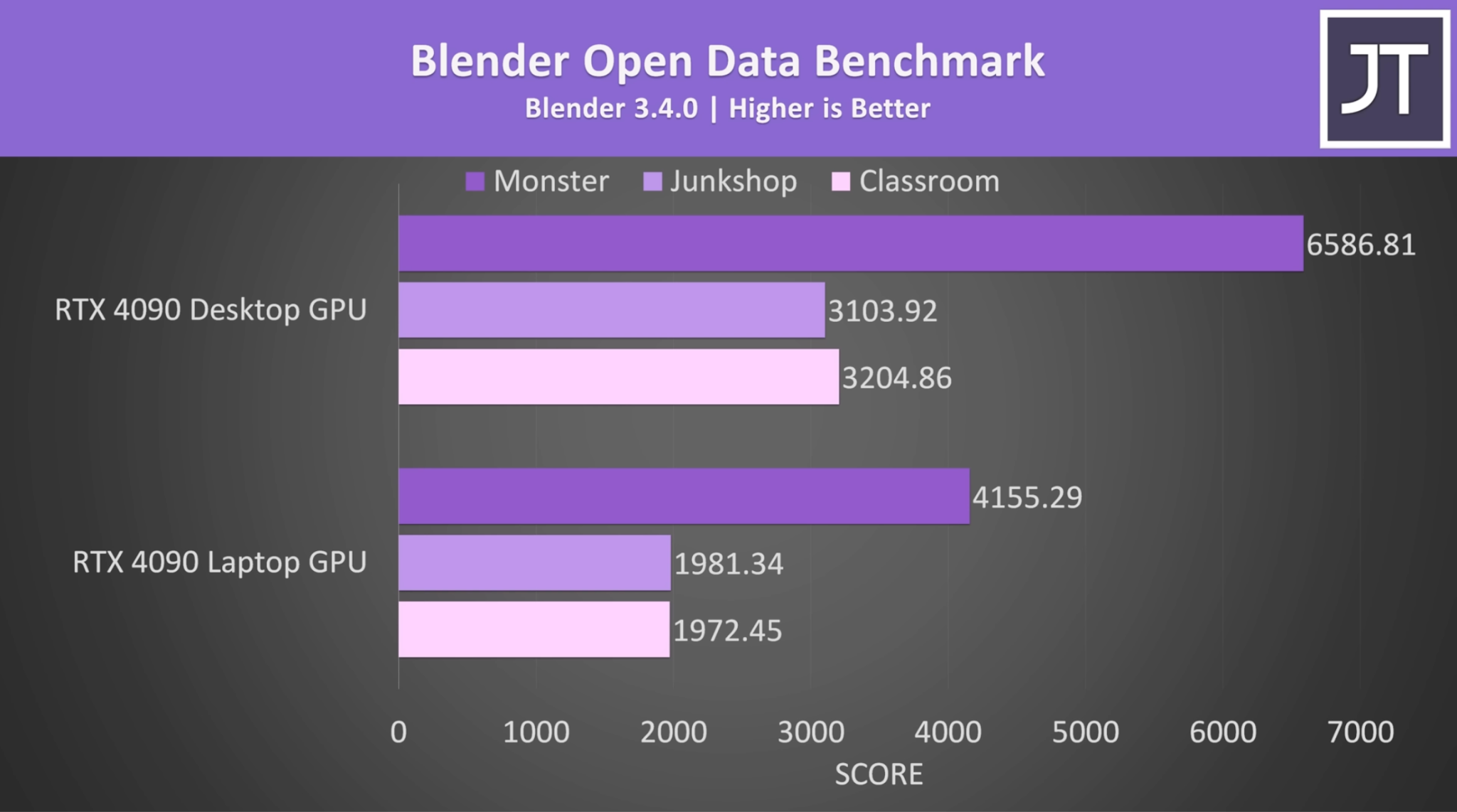

Source: Jarrod’s Tech, YouTube
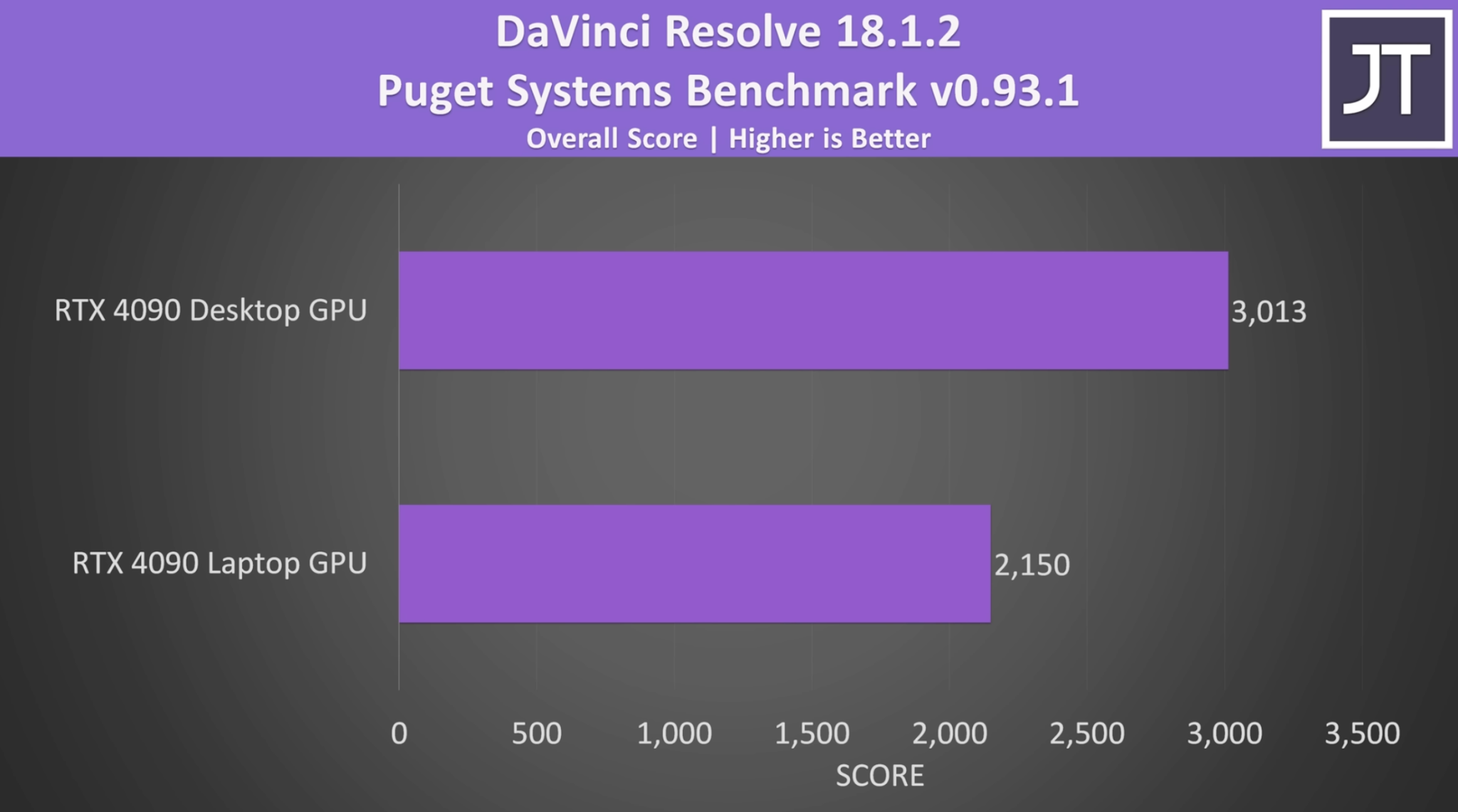

Source: Jarrod’s Tech, YouTube
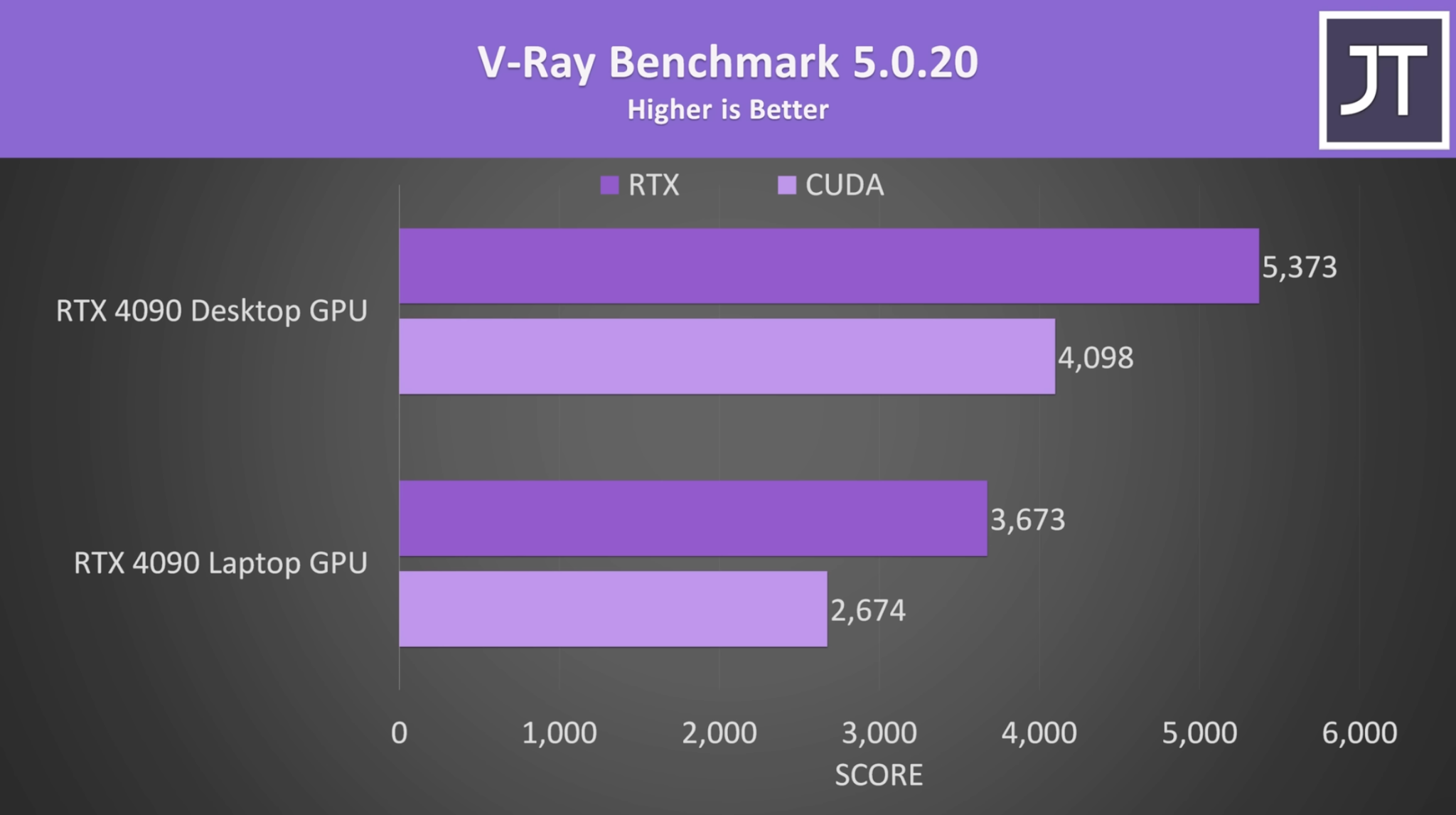

Source: Jarrod’s Tech, YouTube
As always, your mileage will vary depending on your software suite of choice.
We’re also focusing primarily on NVIDIA as its graphics cards are universally lauded for their prowess in creative applications and workloads — and rightfully so.
Conclusion
Laptop GPUs are almost always weaker and more “gimped” than their desktop counterparts. There’s still no way around it, as they face too many limitations in regards to thermals, cooling, and sheer physics.
Still, many recent technological advancements have resulted in GPUs becoming a lot more efficient (NVIDIA ones, at least), which means that they can more easily be implemented inside laptops without any overly tremendous downsides.
There’s still a difference, mind you, but it’s smaller and less noticeable than ever before.
NVIDIA’s RTX 4060 is the perfect example, as the exact same die is used in both desktop PCs and laptops, therefore resulting in very comparable performance.
That doesn’t hold true for more powerful SKUs and models, but the gap still isn’t as large as one would expect — or, rather, as large as it was in the past.
As always, make sure to read and watch as many reviews as you possibly can before making any kind of purchasing decision.
There’s a bunch of things you need to keep in mind when buying a laptop (be it for gaming, content creation, or both), and OEMs often don’t go out of their way to label the specifics — despite the fact that a small difference may well render a laptop nigh unusable for certain use-cases and workloads.
FAQ
Let’s go over a few potential questions you might have regarding laptop GPUs and the way in which they compare to their desktop counterparts:
Are Laptop GPUs Slower than Desktop GPUs?
They are.
There’s just not enough room inside a laptop to cram in a desktop-class GPU and actually have it perform similarly.
There are a few outliers, though; the mobile RTX 4060 can deliver a very similar level of performance as its desktop namesake as it uses the exact same die. It’s still gimped in certain other areas, but the point stands nonetheless.
Laptops always feature cut-down GPU implementations, which is only natural given their thin enclosures and limited airflow. That, however, doesn’t mean they lack power!
Are Laptop GPUs Powerful Enough?
Most definitely! They might not be on the same level as their desktop counterparts, but they’re still plenty powerful for both gaming and any kind of content creation.
The best ones, in particular, can offer a tremendous level of performance, no matter the workload. Just don’t expect much in terms of battery life as the more you push your laptop the shorter it’ll last.
And, needless to say, be mindful of things like TGP as the amount of power a laptop’s GPU can draw will directly (and most noticeably) influence its performance.
Just because it’s called a certain way doesn’t guarantee it’ll perform as you’d expect it to. These details are, therefore, of the utmost importance.
Is NVIDIA RTX 30 Series Still Good?
Absolutely!
The RTX 3060 is still a spectacular mid-tier option for most, whereas the RTX 3070 and 3070 Ti are capable enough to deal with whatever you might want to throw their way.
They’re not as efficient as their successors, but they sure don’t lack power.
NVIDIA vs. AMD — Who Makes the Better Laptop GPUs?
That’s a hard question to answer as it really depends on what exactly you’ll be using your laptop for.
For gaming, NVIDIA has the upper hand. AMD is, generally, the better option from a price-to-performance standpoint, although its GPUs lack many software- and hardware-based features for which NVIDIA is so well-known for.
If you’re a creative professional, then going with NVIDIA is essentially a must as it’s by far the better choice for 3D modeling, rendering, video editing, and such like.
Can You Replace a Laptop’s GPU?
You cannot. There’s simply no way for you to replace (or upgrade) your laptop’s graphics card.
You can, generally speaking, attain more performance by investing in an external GPU — assuming your laptop has a Thunderbolt 3 or 4 port — but in that scenario you’d have to spend a lot more money (both on an eGPU enclosure and on a compatible graphics card), and even then you’d have to accept a lower level of performance because of Thunderbolt’s bandwidth-related limitations.
Still, it’s nice to at least have the option. ASUS’ proprietary XG Mobile also warrants a mention, but it’s much more expensive than a regular eGPU setup and, needless to say, is only compatible with a handful of devices.
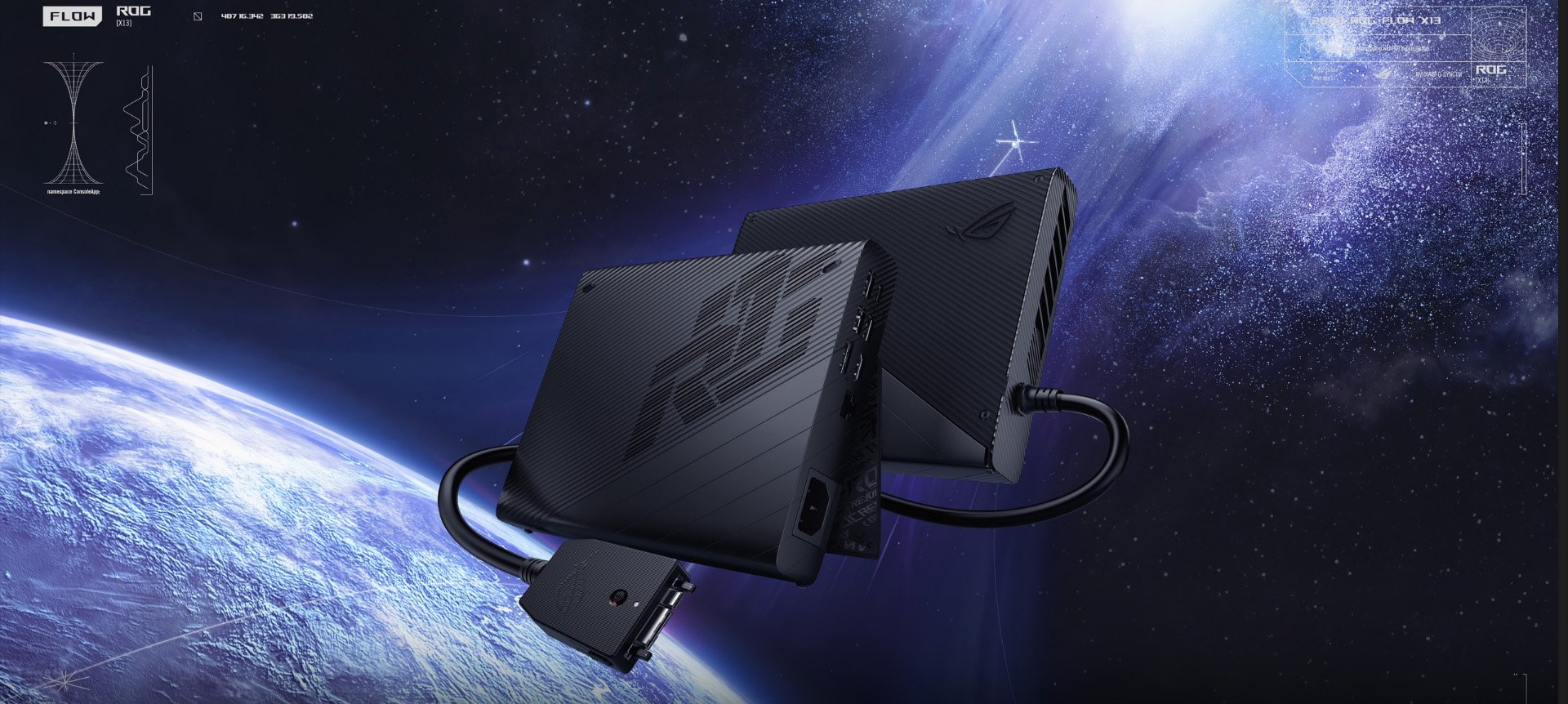

What’s the Most Powerful Laptop GPU?
That’d be the NVIDIA RTX 4090. It’s nowhere near as powerful as its desktop counterpart, but it’s still incredibly capable.
Whether it’s worth the asking price is highly debatable, but it most certainly is a viable option for creative professionals and those who need a tremendous amount of performance — either for work or play.
Here’s how the mobile RTX 4090 stacks up against its desktop namesake specs-wise:
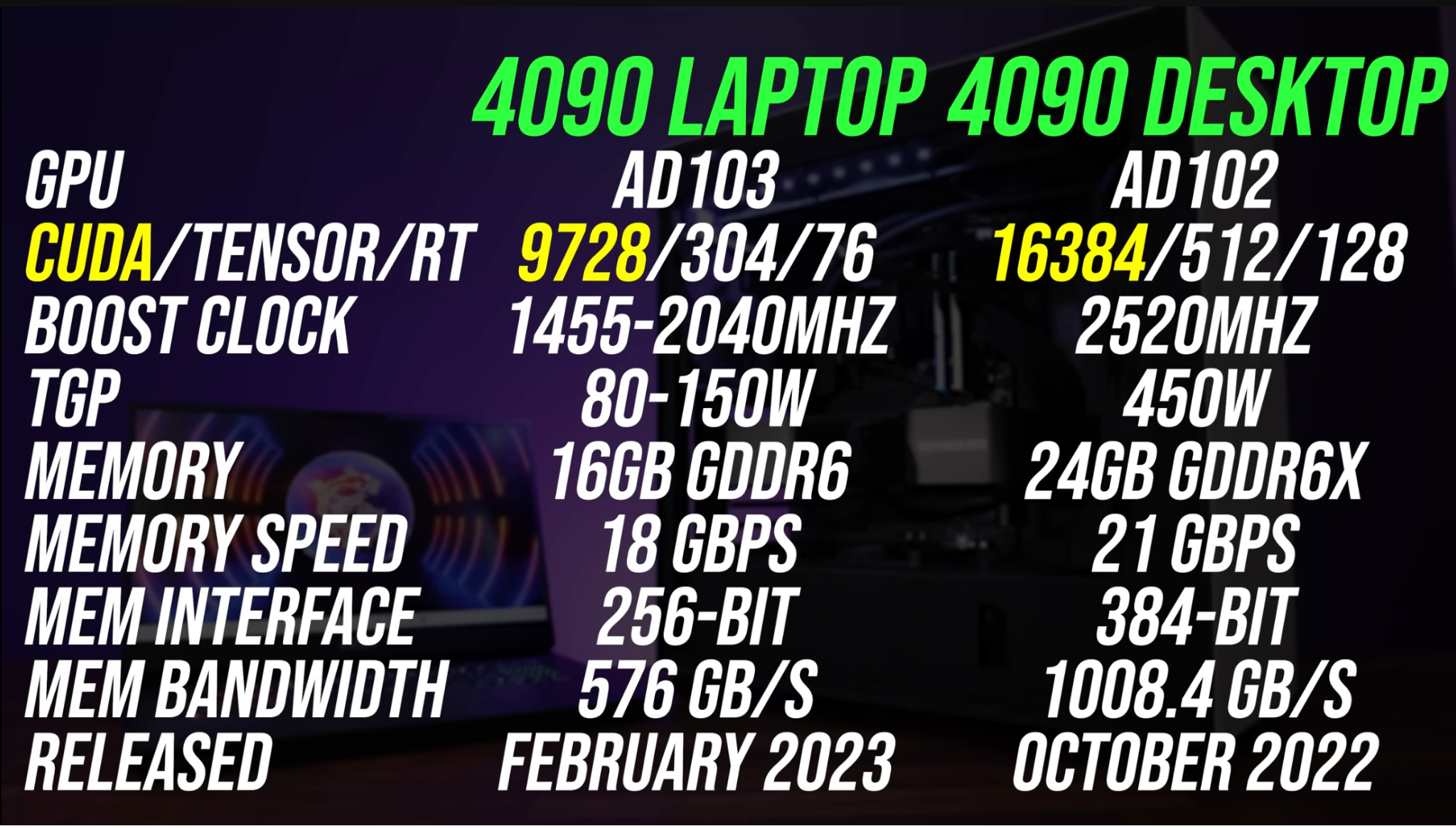

Source: Jarrod’s Tech
Are Laptop GPUs Good Enough for Content Creation?
Definitely!
Desktop GPUs are still the better option if you’re a tremendously demanding creative professional (and need as much power as possible), but you’d still be able to deal with nearly any workload on a powerful, high-end laptop, despite it being a lot more limited in regards to thermals, power limits, and cooling potential.
Over to You
What are your thoughts on laptop GPUs and the way in which they differ from full-fledged desktop ones? Are they still capable enough for your needs and projects?
Let us know in the comment section down below and, in case you need any help, head over to our forum and ask away!

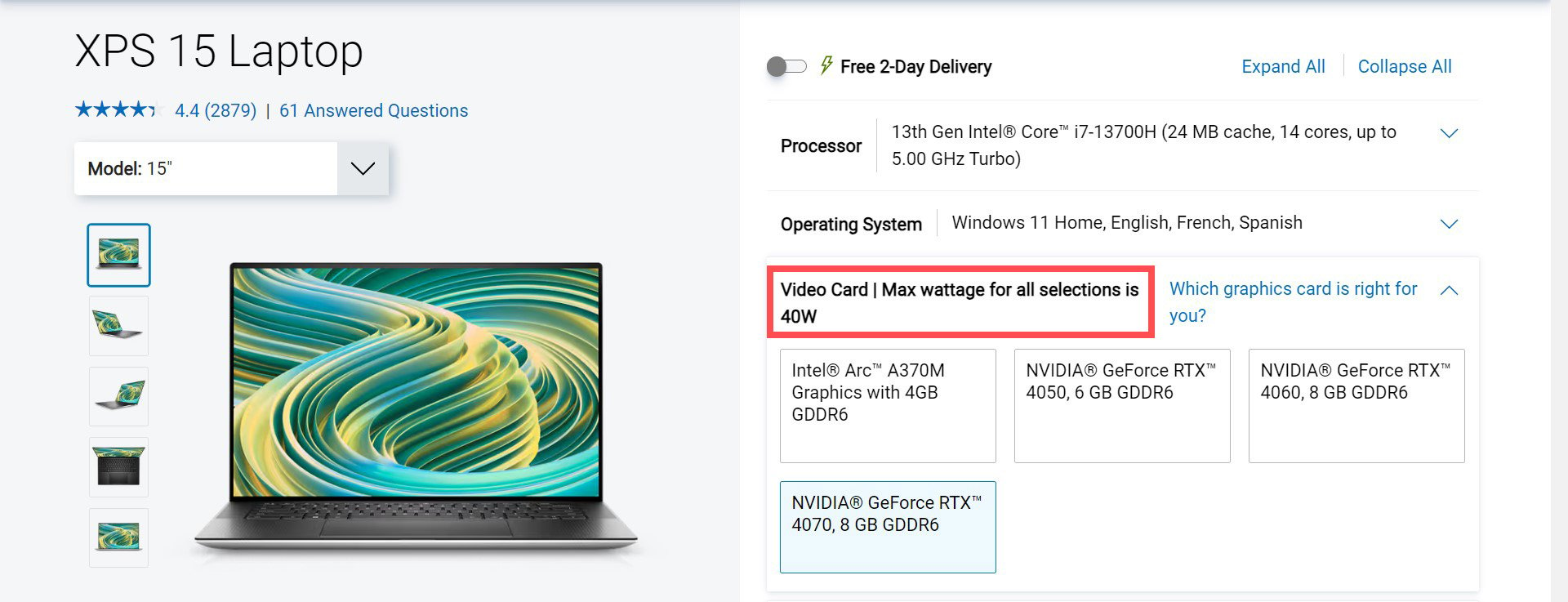
![Are Laptop GPUs Slower Than Desktop GPUs? [Updated]](https://funtechnow.com/wp-content/uploads/thumbs_dir/Telegram-Groups-Or-Channels-Not-Loading-qfycpziihgbbzm59ujvb0kwqzmwbymidcvnmj4d2yk.jpg)
![Are Laptop GPUs Slower Than Desktop GPUs? [Updated]](https://funtechnow.com/wp-content/uploads/thumbs_dir/Hyperdolly-is-a-track-free-motorised-dolly-of-infinite-length-qfycvr8ufu7p9frj5jnutmhm9sgg7qf1tftxl9t2rg.jpg)



